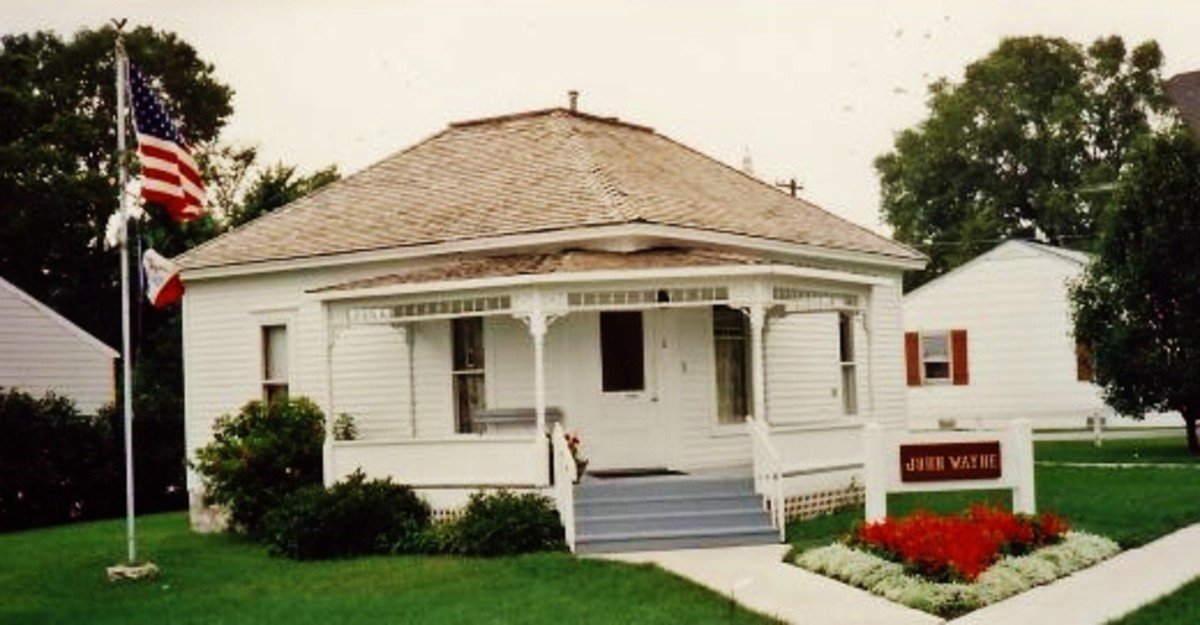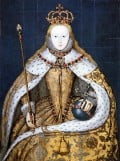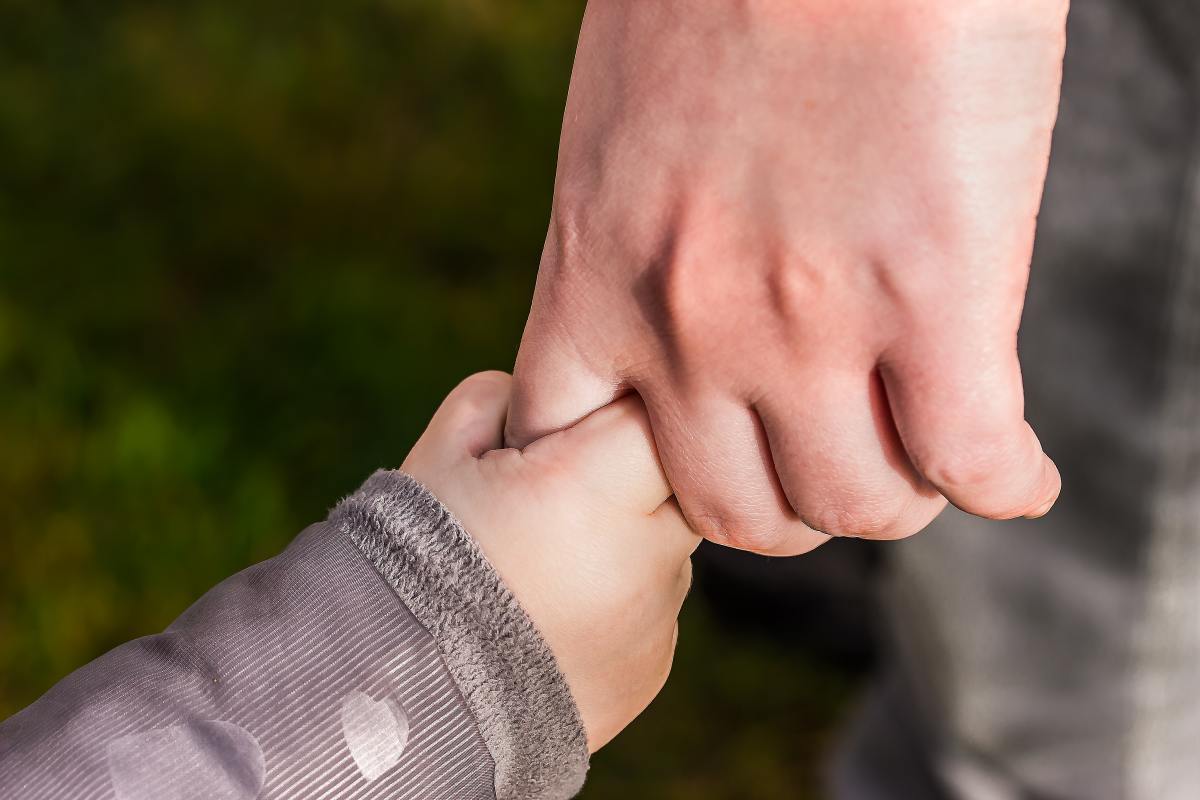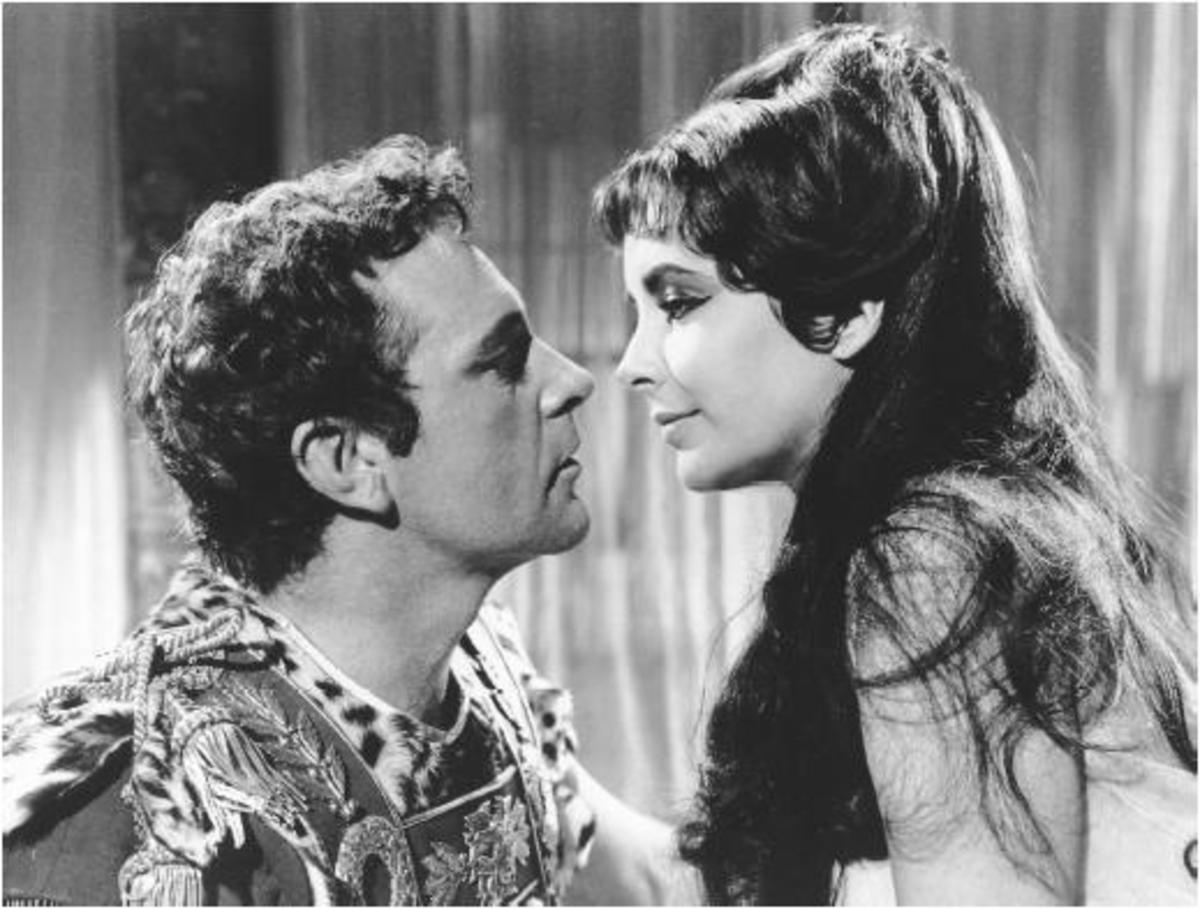Weston Wagons West - Episode D8 - Wash Kinnick Family leaves Iowa
Each wedding needs a wedding cake

The Wash Kinnick family members wed in Taylor County Iowa
All three of Wash Kinnick’s daughters remaining at home in 1875 had married prior to 1880. Hannah E. married William D. Dodson on 26 November 1876. One year later, on 7 November 1877, Cloe married John Samuel Davis, in Clarinda, in nearby Page County. In 1878, Mahala married Melville Hathron in Taylor County.
William and Hannah Dodson, along with children, Bessie, 3, and George, 1, were in Polk Township, in the southwest corner of Taylor County, in 1880. John S. and Cloe Davis along with 7-month-old son, Charles A., were living in nearby Nebraska Township, Page County, Iowa, in the 1880 Federal Census. Melville, 30, and Mahala, 24, along with one-year-old Emily appeared in the 1880 Federal Census nearby the Waah Kinnick Family. Wash, now a widower, was listed with his three sons at home: George, 17, John, 14, and Saul, 11.
In 1880, Frank, 50, and Octavia, 45, Weston along with their children, Taylor, 24, Cecile, 19, and Bernard, 15, continued on their expanded home, shop, ranch on the outskirts of Villisca, Montgomery County, a few miles northwest of the Kinnick farms in Nodaway and Holt Townships of Taylor County, in southwest Iowa. Taylor was a full-partner in the family business as farrier and blacksmith. Both Octavia and Cecile were active in the breeding and training of horses for sale and rent or lease. Bernard had completed his initial farrier apprenticeship, was mid-way through his blacksmithing apprenticeship, and had earned his first two mares the prior year per family tradition.
In the spring of 1882, John S. and Cloe Davis, along with their son, Charles, responded to the opening of wide-open land in the Big Horn country of north-central Wyoming, Sheridan County, just south of the Montana border, by setting out across country by covered wagon, with others, for that destination. They arrived in August of that year in Big Horn and located on Beaver Creek. Later disposing of that property, they moved to a place on Little Goose. Seeking more sparsely populated places with open ranges, they settled on the West Pass Creek country. By 1885, they had settled into a location where they remained, as pioneers and community leaders for decades.
They made their way to Oregon in a covered wagon train
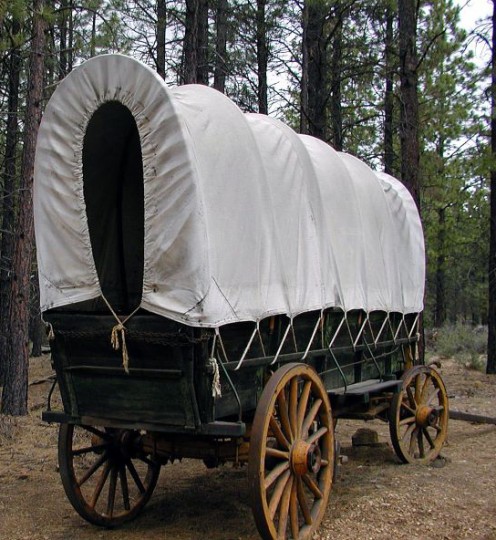
John Henry Kinnick first moved to Union, Oregon
The city and County of Union are located in the far northeast region of Oregon, in the extreme southeast corner of the Grande Ronde Valley near the western edge of the Wallowa Mountains. Traditionally a lumber and agriculture town, apple and pear tree nurseries were begun as early as 1862, and the town of Union was originally established in 1878. The main street was and is lined with Victorian homes and charming brick buildings (per Wikipedia and cityofuniondotcom). It caught the attention of John Henry Kinnick, still single and 22 years of age, and Bernard Weston, still single and 23 years of age in 1888. They joined with a group of others with similar thoughts, in the spring of the year, on the covered wagon trek to Oregon. John easily found farming work with others until they managed to acquire a place of their own. Bernard found his skills as farrier and blacksmith were in demand from his first day of arrival.
Whether or not they found what they went for, we know the move was successful. John Harvey married Maggie Thompson of the 30th day of October in 1894. Bernard Weston married Constance Miller in December of 1895. Bernard and Constance had their first son, born in March of 1898. [Union’s Historic Park today sits where “A blacksmith shop stood on the site … from the 1880s through … 1910…”]
John Harvey and Maggie had their first son, Glen Harvey, born on 7 Sep 1902. [Glen Harvey went on to have a long career in the oil industry, in Utah and Kansas; he died in 1995.] In 1907, John Harvey, Maggie, Glen Harvey, Bernard, Constance and Conrad all moved to the Grass Range area of Fergus County, Montana, a few hundred miles to the east, rejoining other family members.
Horses still were critical to farm life here
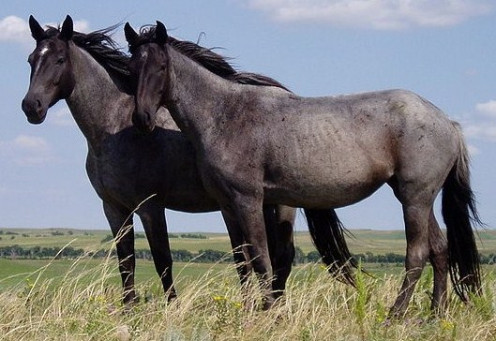
George Washington Kinnick led the rest of the family to Wyoming, then Montana
On 21 September 1884, back in Taylor County, Iowa, George Washington Kinnick, age 21 at the time, married almost 17-year-old Emma Ida Briggs. Their first son, Les, was born 27 May 1886, followed by a second son, William R., born 20 Feb, 1888. Their first daughter, Letha May, they called her May, was born in March of 1890. In December of 1885, 29-year-old Taylor Weston married Allison O’Connell. Their first child, a son, Victor, as also born in March of 1890, but in Villisca, Montgomery County, where they had lived since they married. Taylor had continued to work in partnership with his father at his shop and continued to raise and train horses.
In the spring of 1891, looking for new horizons and ‘fresh pastures,’ George Kinnick and his family in Taylor County decided to move to the Wyoming. Taylor, Allison and Victor Weston decided to join George, Emma, Les, William, and May on the wagon train trip to Wyoming along with a couple of other young families. Wash and youngest son, Saul, decided they would rather take the trains to Union, Oregon, to be with John and his wife, Maggie. (Wash Kinnick died in Union, Oregon, at the age of 78 in 1904.) Frank and Octavia Weston chose to stay on their place just outside of Villisca.
The Kinnicks and the Westons lived in Wyoming for 11 years before moving on to the Grass Range area of Fergus County in Montana in 1902. Once John and his family and brother Solomand joined them, in 1907, they all lived in the area for decades. For example, when George Washington Kinnick died in 1959, at 95, he had been in Central Montana for 58 years, his obituary stated. John died there, at age 90, in 1955.
Historical note by the author
All members of the Weston family are fictional, of course. All the Kinnicks and their relatives were historical figures, used here fictitiously. The relationships between the Kinnick and Weston families therefore were created fictionally for this series. Wash Kinnick was related to the author as second cousin, four generations removed. In The History of Taylor County, Iowa (1881), Wash is referenced as ‘Washington Kinerick’ but have no doubt that it is he. He lived in the vicinity for more than 30 years, it turned out.
Each of the relationships within which these historical figures appear in these episodes is totally consistent with known historical facts for each such person in the official records of North Carolina, Indiana and Iowa.
The author's historical perspective in this hub relied extensively on collaborative research done while compiling the 2003 KINNICK Genealogy Book Online … http://freepages.genealogy.rootsweb.ancestry.com/~kinnick/ This was an update and revision completed on the 50th anniversary of the 1953 publication of: "A Genealogical History of the Kinnick Family of America" by Mrs. Nettie Edna Kinnick Waggener (self-published).
This episode is the eighth in the Dx series following the Jeremiah Weston and the John and Ann Kinnick branches of the families.
This is "The Homeplace Saga" series of family saga, historical fiction stories
- "The Homeplace Saga" Blog
The home blog for "The Homeplace Saga" series of historical fiction family saga stories set in the southern Missouri Ozarks. All updates of the series are mentioned here, regardless of platform.

